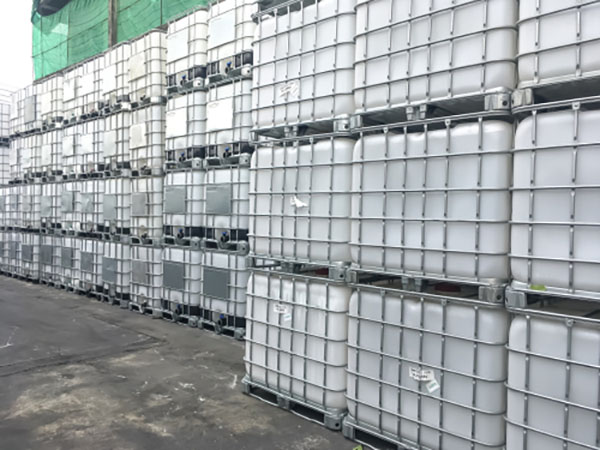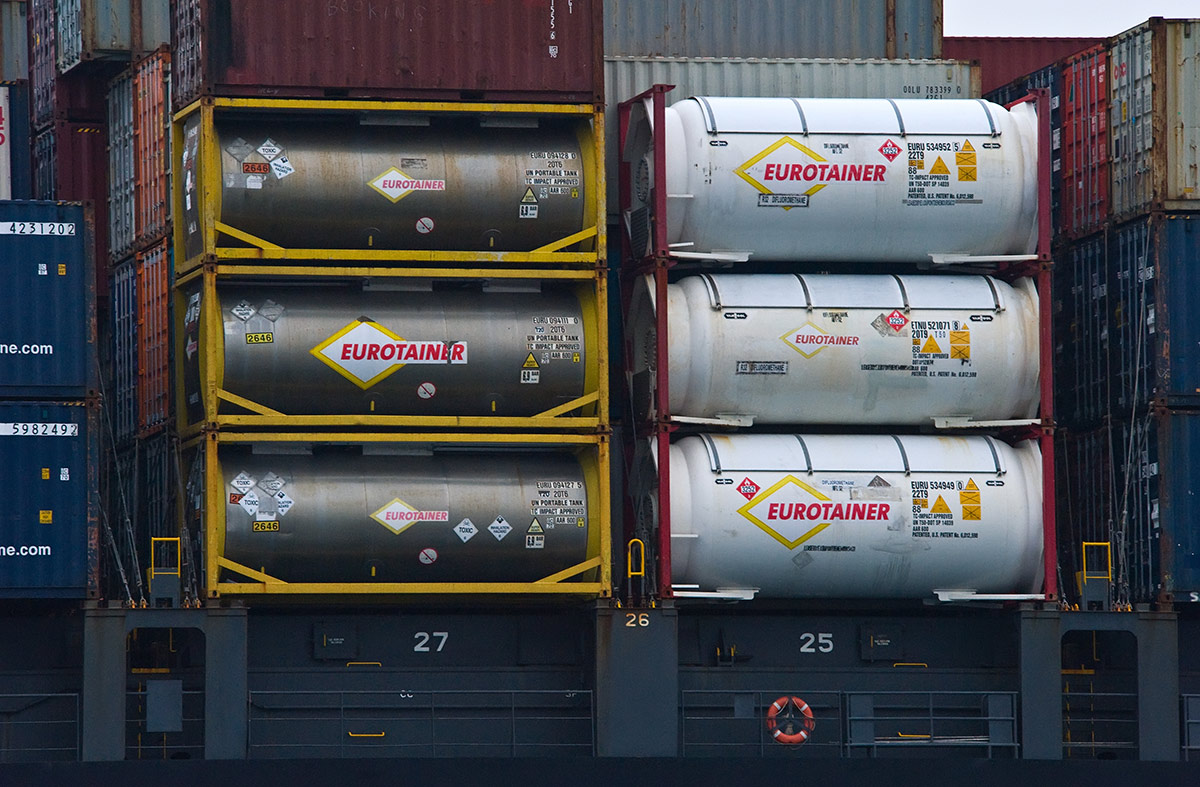The clothes you wear, the building materials your house is made from, the electronics that power your life—they have one thing in common, and that’s that they were probably in an intermodal shipping container at some point. In fact, some research has suggested that up to 90 percent of everything the average consumer buys has been shipped via container.
It turns out that the evolution of these big steel boxes has been a big factor in creating the commerce of the 20th and 21st centuries. The cost-effectiveness, interoperability and versatility of shipping containers have made them an incredible success story of modern commerce. In turn, shipping containers have helped millions of other businesses, large and small, to flourish, thanks to their ability to get just about any kind of goods anywhere they need to go.
Part of our job as shipping experts at Air Sea Containers is knowing the history of shipping materials and techniques—because often, where the industry has been is what tells you where it’s going. Thus, we’re proud to offer our customers this glimpse into history of shipping containers so they can appreciate the impact of this incredible invention and see just how far it’s come. Here are seven ways that the shipping container has changed the industry and, along the way, changed itself to match the needs of 21st century commerce.

Shipping containers have created the modern global shipping economy.
It’s no exaggeration to say that the shipping container created the business landscape easily as much as the Internet or credit cards did. Before the shipping container, dock and warehouse work was labor-intensive, inefficient and almost entirely manual. It took a team of dozens of workers to unload a single ship, and transferring cargo between freight modes (such as a ship and a train) was even more time-consuming.

A North Carolina trucking merchant named Malcolm McLean would become the one to change all that. In the 1950s, he sold his successful trucking business and used the proceeds to invent a standardized shipping container. His design was stackable, easily loaded and unloaded using cranes and could be transferred from one transportation mode to another without the need to unpack the goods inside. The idea caught on fast, and major shipping companies quickly began outfitting their ships, trains and trucks to transport McLean’s ultra-efficient new containers.
By the time the new millennium rolled around, McLean’s invention was used around the world to transport everything from socks to vegetables to cars. The International Maritime Hall of Fame voted Malcolm McLean as their “Man of the Century,” and they weren’t wrong. In many ways, McLean’s invention made the innovations of 20th century (and 21st century) commerce possible.

Containers are shipped in ever-increasing numbers.
Malcolm McLean’s original container vessel, the Gateway City, had a container capacity of just 226 TEU (Twenty-Foot Equivalent Units). Things are a little different today because the 21st century marine container shipping landscape is all about thinking big—really big.
The largest container ships transporting goods around the world today can transport over 21,000 TEU of containers at once. By moving billions of dollars’ worth of goods per shipment, they create increasingly large economies of scale that allow businesses to keep consumer prices low. China, in particular, has used container shipping as a key element of its manufacturing and shipping dominance—Chinese ports processed 104.7 million TEU just in the first five months of 2019.
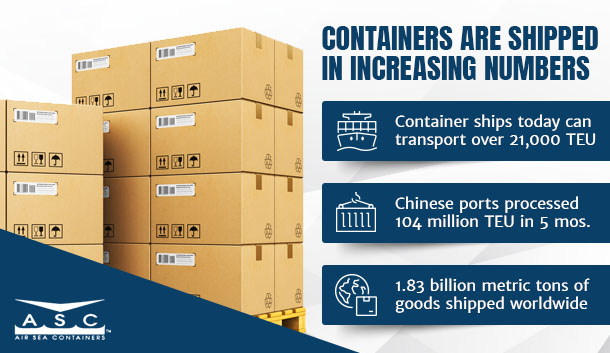
With 1.83 billion metric tons of goods shipped worldwide in containers during 2017, ports and shipping firms have both seen fit to invest in improving their capacities. Dredging projects are underway in many American ports to make room for more maritime traffic and larger container ships, while other ports are investing in infrastructure like newer and better container cranes.

Shipping containers now come in many different types.
Standardization is the most important feature of the shipping container—it’s what allows it to easily be transported by ship, train or rail. At the same time, however, the design is highly versatile and can accommodate a lot of different features and design modifications. Containers are now available that fit the needs of all kinds of different cargo, from dry goods to perishable produce.
For starters, containers are available in both 20-foot and 40-foot sizes. Each size has its own unique strengths: 20-foot containers are generally best suited to carrying heavy cargo, such as machinery and construction materials, while 40-foot containers are better suited for voluminous cargo like steel pipe, furniture and scrap. Both are tremendously versatile and give shippers plenty of options.
Some of the most common types of containers you’ll encounter are:
- Dry storage containers are the basic model of lockable, stackable storage containers without additional special features. They’re great for all kinds of goods, from apparel to appliances to construction materials.
- Tunnel containers feature a set of doors on each short side of the container. They make loading and unloading considerably faster, so they’re ideal for containers that will be loaded and unloaded several times during their journey.
- Flat rack and open top containers feature collapsible side and/or top panels, making them useful for shipping oversized cargo such as heavy machinery and construction materials.
- ISO refrigerated containers (also called reefer containers) include onboard refrigeration systems and are used to transport perishable, temperature-sensitive materials such as food and pharmaceuticals.
- Insulated containers include insulated lining in their walls that protects goods from prolonged exposure to high temperature without the full-capacity refrigeration of a reefer container.
- Tank containers are large metal tanks sitting in a metal frame that fits the standard size dimensions of a shipping container. Chemical and industrial shippers around the world use them constantly.
- Half height containers are vertically shorter, open-top containers that are usually used (along with tarps) for transporting materials like coal, gravel, dirt and sand.
- Car carrier containers are specially designed to safely transport several automobiles together.
- High cube containers are almost identical to normal 40-foot containers, but have an additional foot of height to accommodate larger cargo.
Each container has its own uses, and each can make the perfect shipping solution for a different type of business. Put them together and you can start to see how global commerce brings such an incredible variety of goods to so many different places.

Shipping containers have become more secure.
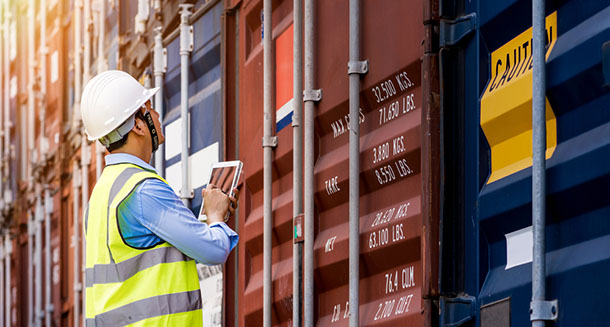
Shipping containers are among the safest and most secure ways to transport goods. Lockability was one of the biggest advantages of Malcolm McLean’s original design, making it easy to secure goods and protect them from theft in transit. In turn, this has resulted in less theft from shipping containers, which means fewer losses for businesses and lower prices for the consumer.
Many different types of shipping container locks are available for keeping shipping containers secure. The most popular shipping container lock options include:
- Container padlocks–heavy-duty U-shaped padlocks that provide a tight fit to secure a container’s doors.
- Lock boxes–which hide the lock inside a steel box on the container door to make it almost impossible for thieves to access. Lock boxes can be easily bolted or welded on to containers that don’t have them.
- Recessed shackle locks–disc-shaped padlocks with the shackle hidden on the inside of the lock housing to prevent access.
- Crossbar locks–bar-style locks that clamp onto the container’s door handles and keep them from turning, even if the padlock is cut.
For shippers who want an extra layer of security, wireless GSM alarm systems designed specifically for containers are also available. Where most building alarm systems require a landline phone connection, GSM alarms use an internal SIM card to dial a pre-set number when their sensors detect a break-in. With durable lock options and simple, cost-effective alarms both available, it’s never been easier to ship and store goods securely in containers.

Shipping containers have become less expensive.
Shipping goods around the world has never been cheap, but it would be vastly more expensive without shipping containers. In fact, the cost of shipping freight has dropped by 90 percent, mostly thanks to improvements in container handling technology. Containers fill a critical niche by allowing businesses to import goods at scale cheaply, and it’s safe to say that the entire global business ecosystem relies on them to make shipping cost-effective.

Containers can be produced quickly and inexpensively, making them an accessible and affordable option for all kinds of shippers. That means that they help businesses find cost savings that make it possible to take a risk on importing a niche new product or expanding into an international market.
For businesses looking for an economical container solution, online container brokers like Air Sea Containers make it easy to find a great price on a new or used shipping container online. Air Sea also goes above and beyond others by leveraging our huge global network of container suppliers to find the best-quality containers and the best deals for our customers. What’s more, we can arrange to ship your container just about anywhere you need, so check out our online quote form to get started.

Shipping containers are more eco-friendly than ever.
The global shipping industry has a lot of work to do when it comes to meeting the carbon challenges of the 21st century. But the shipping container is actually one of the cleaner and greener inventions of the shipping industry.
For one thing, most shipping containers are completely reusable, and most are durable enough to last for years and transport dozens or hundreds of shipments. Even after one business is done with a container, another one can purchase it, clean it out and have a perfectly good container of its own. This also means that used shipping containers are potentially a great deal for maritime shippers looking to cut costs.
Shipping containers also make it easier to use the most efficient shipping methods, conserving money and carbon emissions. Maritime shipping, while still a significant contributor to carbon emissions, is vastly more efficient than aircraft or truck freight. And rail freight—one of the cleanest and most efficient types—also depends on the easy loading and unloading that containers provide. Without the intermodal shipping container, our shipping system would be even more carbon-intensive than it is now, and businesses would be spending more for less clean and less efficient shipping.
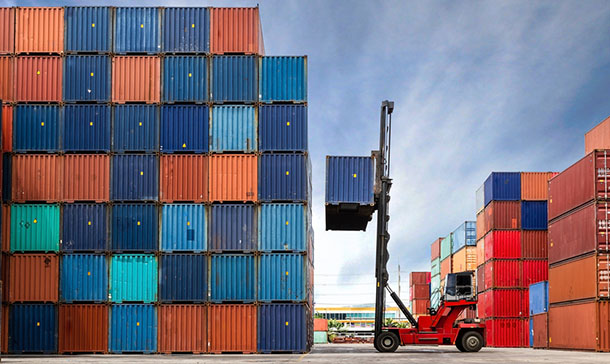

Shipping containers aren’t just for shipping anymore.
With the number of inexpensive shipping containers in the world, it was only a matter of time before creative minds came up with new uses for them. Shipping containers are durable, versatile and widely available, which means that they can become an excellent raw material for all kinds of projects.
Buildings and homes made from shipping containers are gaining popularity, and they’re creating spaces for everything from trendy restaurants to affordable housing. Their inexpensive nature and easy availability mean that just about anyone can acquire one and start building their dream, and all kinds of awesome projects have been created from their metallic shells. Shipping containers were even used to build some of the sets on the 1985 sci-fi movie Space Rage.
The metal from containers can also be repurposed for sculptural art or recycled, making shipping containers themselves a potential resource of the future for art and commerce. The more that shipping containers make their way into our global economy in use cases outside of shipping, the more we see just how useful and versatile they really are.
Shipping containers are an indispensable piece of the global economy, and any business that buys or sells bulk goods (particularly in international markets) will almost certainly need them at some point. Air Sea Containers is the premier source that shipping professionals use when they need great rates on new and used shipping containers. We make it easy to get a quote for a 20-foot or 40-foot shipping container. Just use our easy online shipping container quote form or call (866) 596-9448 to talk to our experts about your container needs.


